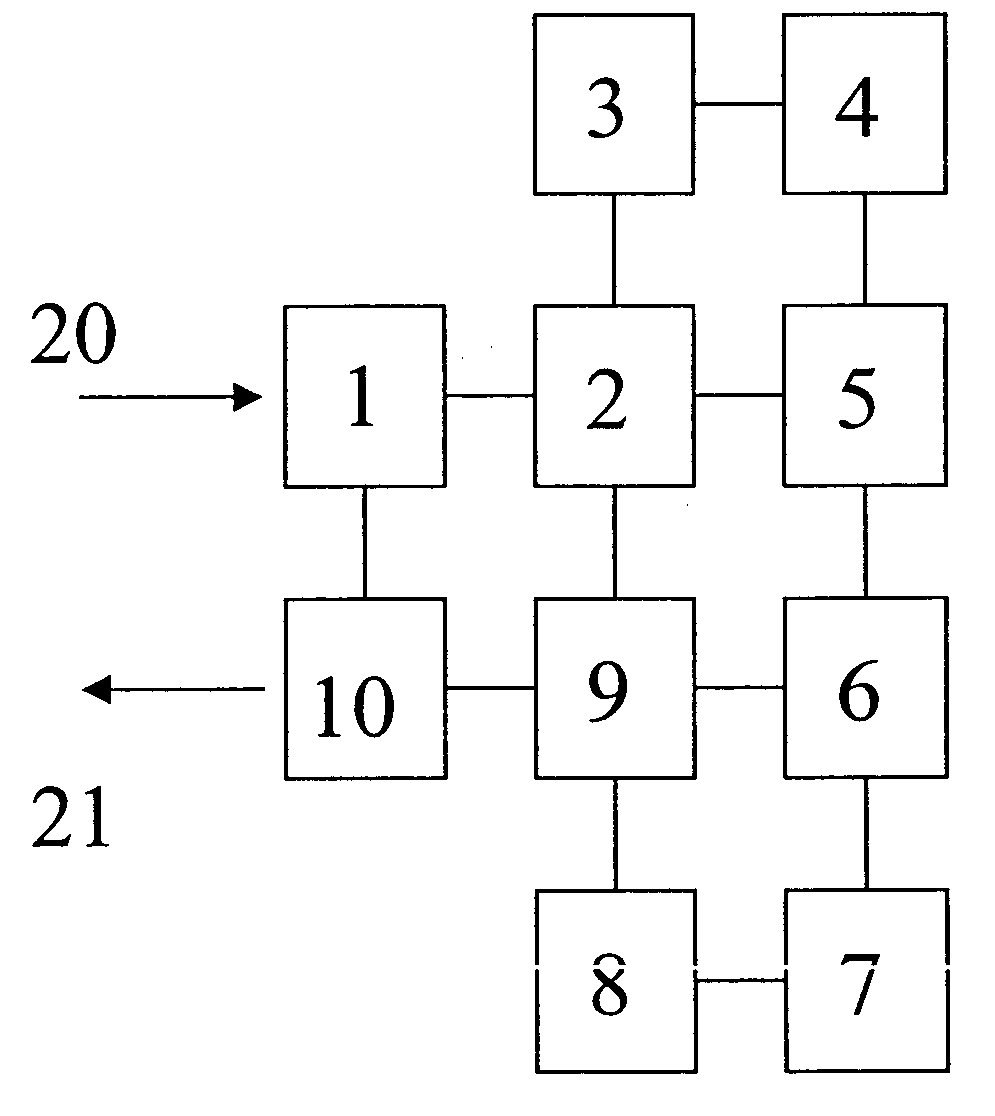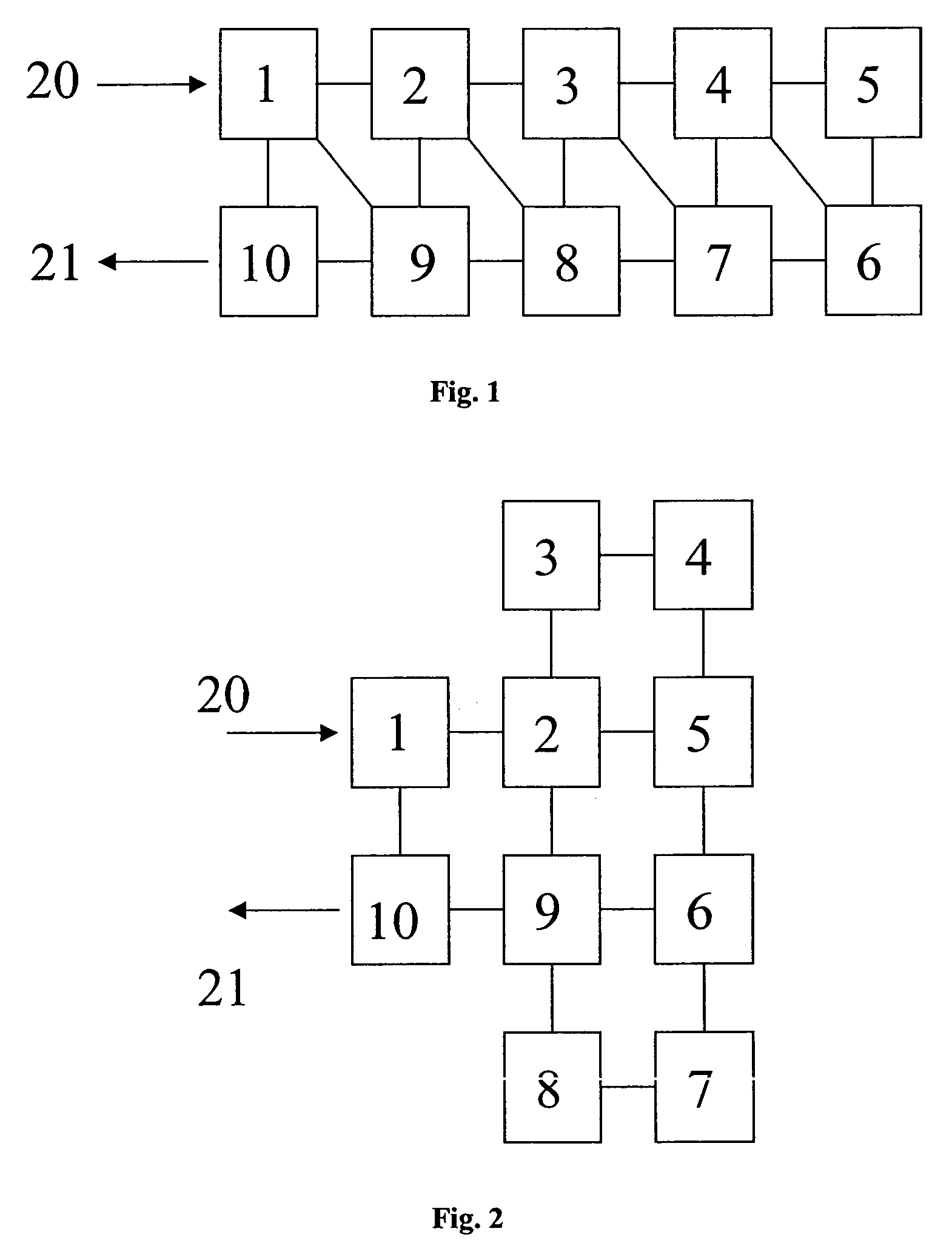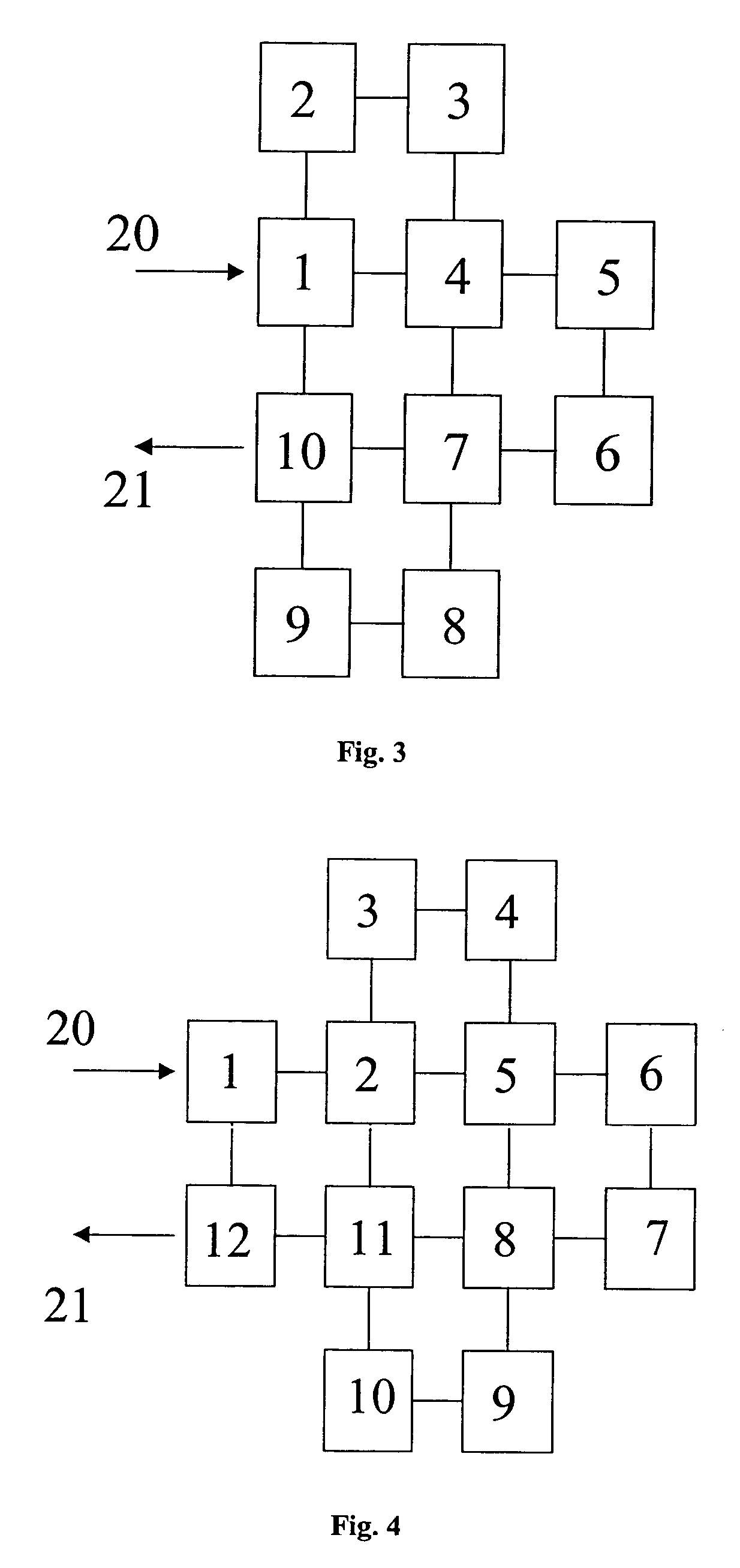Canonical general response bandpass microwave filter
a microwave filter and general response technology, applied in waveguide type devices, basic electric elements, resonators, etc., can solve the problems of distortion, increase the mechanical complexity and number of filter elements, and prevent the filter from meeting the prescribed specifications of flat insertion loss, so as to reduce the number of mechanical components and reduce the distortion
- Summary
- Abstract
- Description
- Claims
- Application Information
AI Technical Summary
Benefits of technology
Problems solved by technology
Method used
Image
Examples
Embodiment Construction
[0023] FIG. 1 depicts a single mode dielectric resonator microwave filter whose housing is provided with an input terminal 20 and an output terminal 21 connected respectively to a resonator cavity, such that each resonator cavity defines a row. The filter housing has several resonator cavities arranged in two rows.
[0024] As to FIG. 2, a microwave filter is described according to the invention wherein the resonator cavities are arranged in several rows and several columns, that is, the resonator cavities define more than two rows and columns.
[0025] The first cavity 1 is connected to the filter input 20 which is non-sequential adjacent to a cavity 10 connected to the filter output 21. A resonator (not shown) is arranged within each resonator cavity such that the dielectric resonators are coupled one to another by means of an iris in the wall that separates one cavity from another.
[0026] A resonator cavity may be coupled to another resonator cavity and / or to several resonator cavities....
PUM
 Login to View More
Login to View More Abstract
Description
Claims
Application Information
 Login to View More
Login to View More - R&D
- Intellectual Property
- Life Sciences
- Materials
- Tech Scout
- Unparalleled Data Quality
- Higher Quality Content
- 60% Fewer Hallucinations
Browse by: Latest US Patents, China's latest patents, Technical Efficacy Thesaurus, Application Domain, Technology Topic, Popular Technical Reports.
© 2025 PatSnap. All rights reserved.Legal|Privacy policy|Modern Slavery Act Transparency Statement|Sitemap|About US| Contact US: help@patsnap.com



